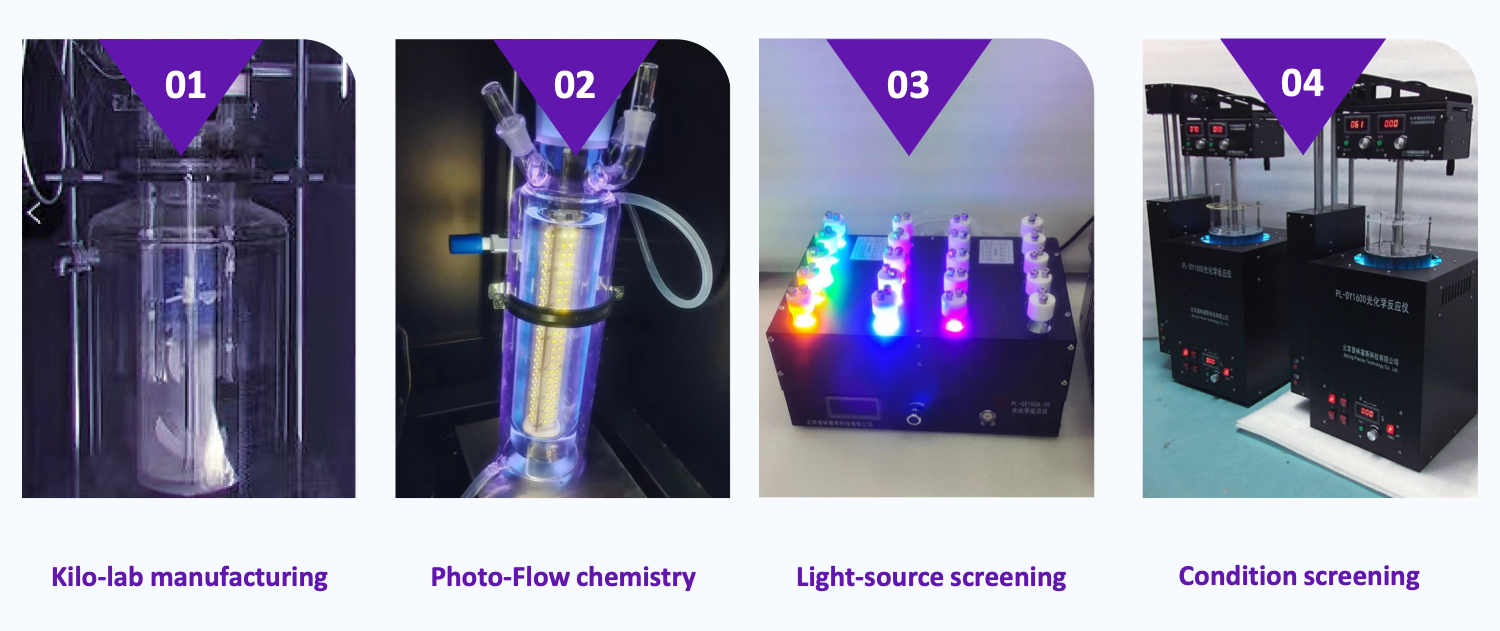Photochemistry refers to the technology that relies on the absorption of light energy by the reaction system so chemical reaction occurs. Due to mild reaction conditions, easy control, high stereoselectivity and low environmental pollution, photochemistry has recently been widely used in drug synthesis.
Photochemistry is the study of light-induced chemical reactions and physical reaction processes. Photochemical reaction absorbs light in order to create excited substances, which in turn lead to a series of reactions. These include single-molecule reactions such as decomposition reactions, ionization, and isomerization. Bimolecular reactions, which involve reactions with a second molecule or atom to form a new compound that produces light emission or light absorption. Photochemical reactions differ significantly from, for example, thermally induced reactions in that once a photochemical reaction is triggered the reaction is usually much accelerated, otherwise the reaction would not proceed.

Through years of research and technical know-how accumulation of green chemistry, we have mastered photo chemistry technology and built a reactor initiated by light. We have used chemical reactors to realize cis-trans- isomerization of olefins and ring-adding, halogenation, elimination, ring opening and other reactions, among which typical examples are the synthesis reaction of high-tensile bicyclic and catalytic decarboxylation boronylation reaction, some cases are listed as follows:
